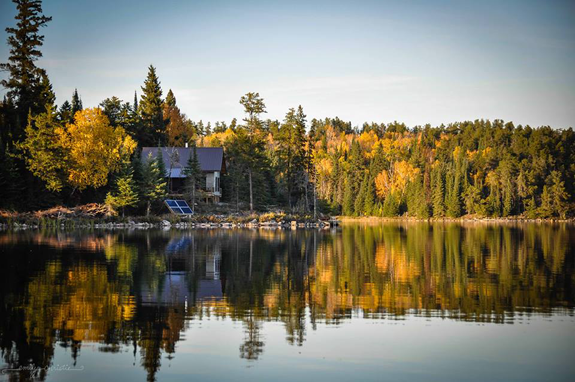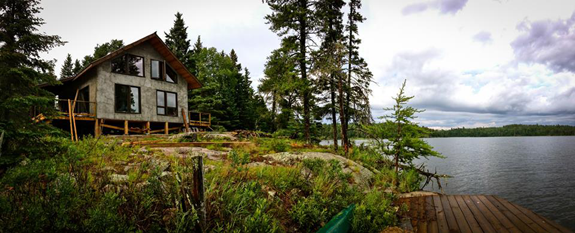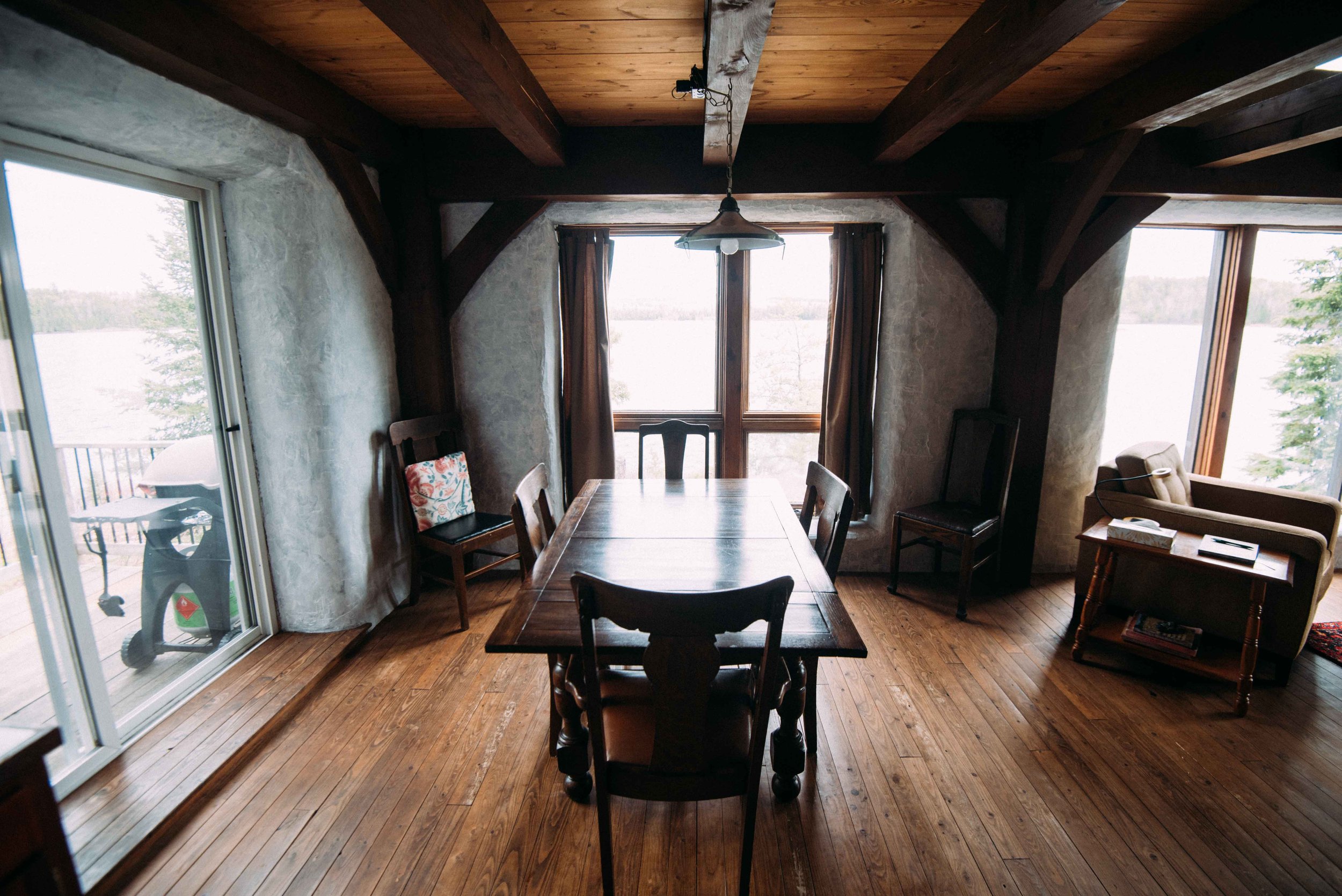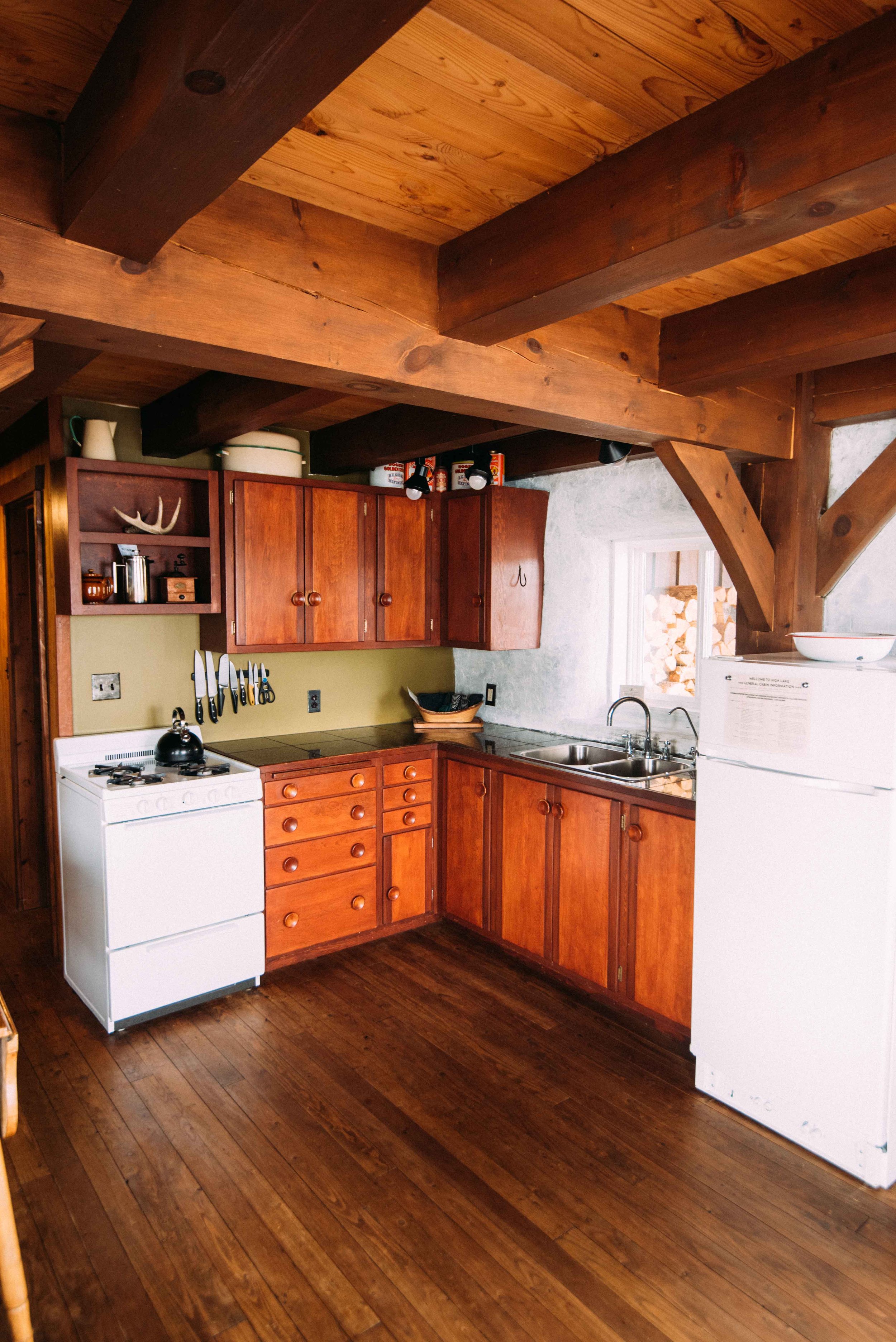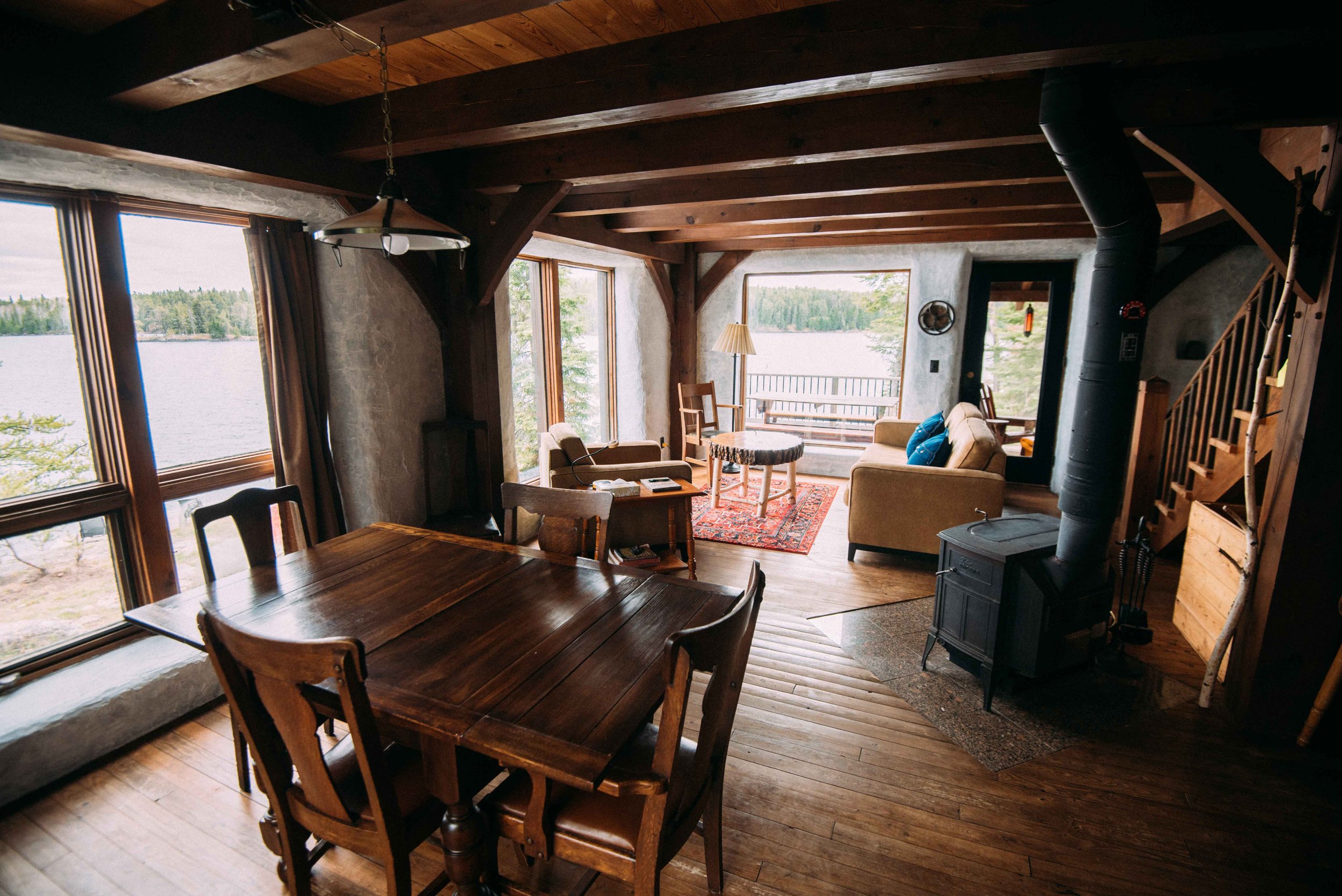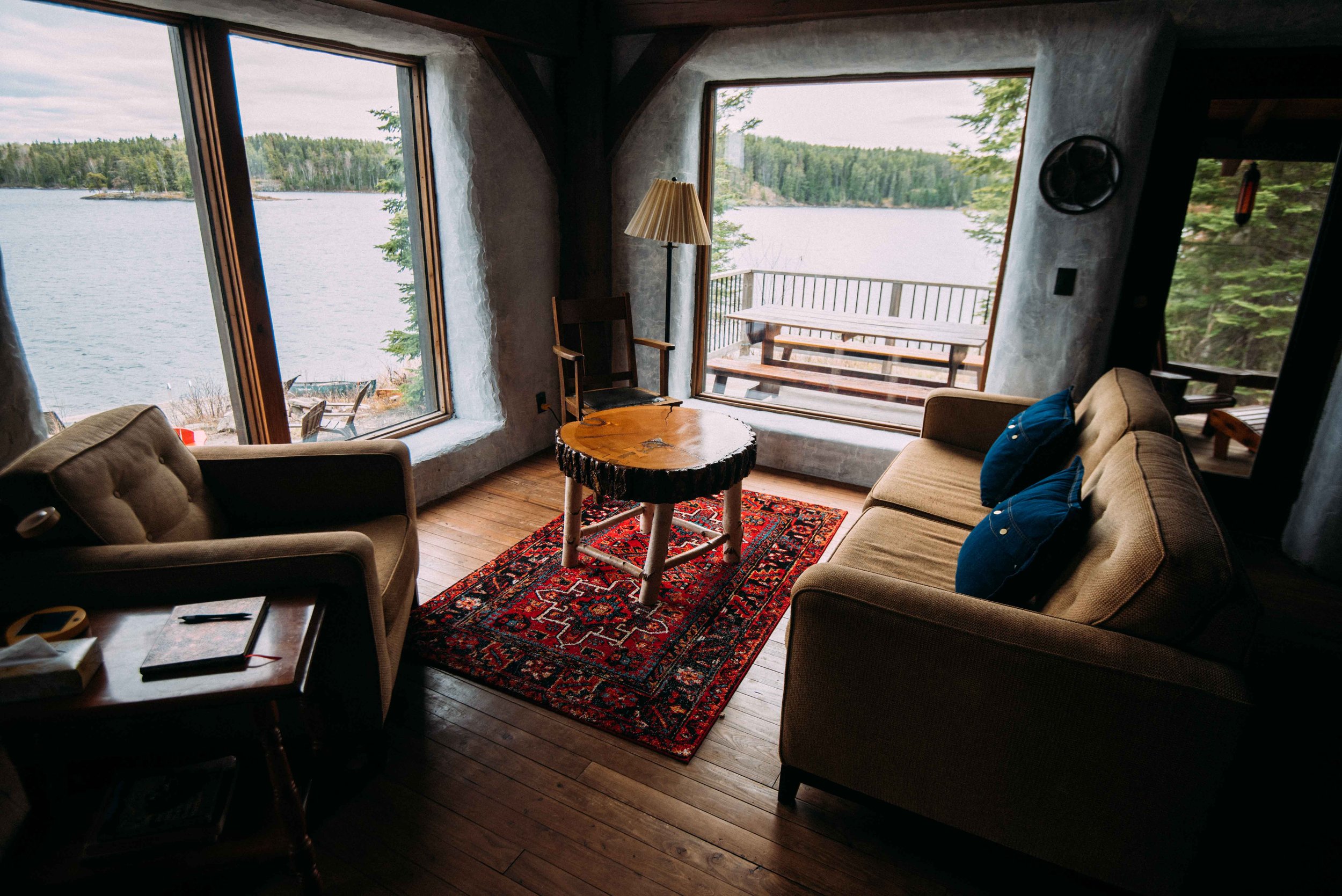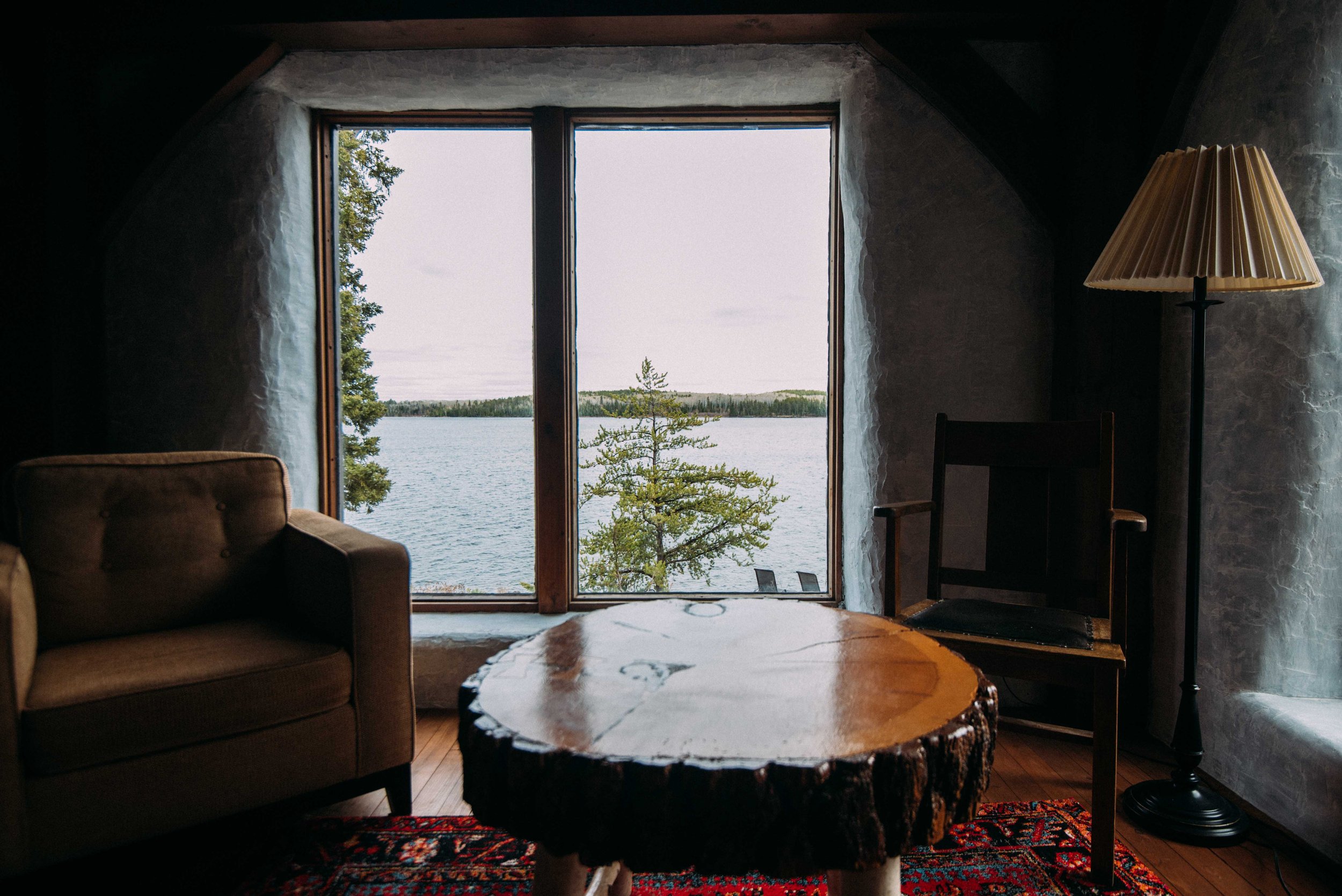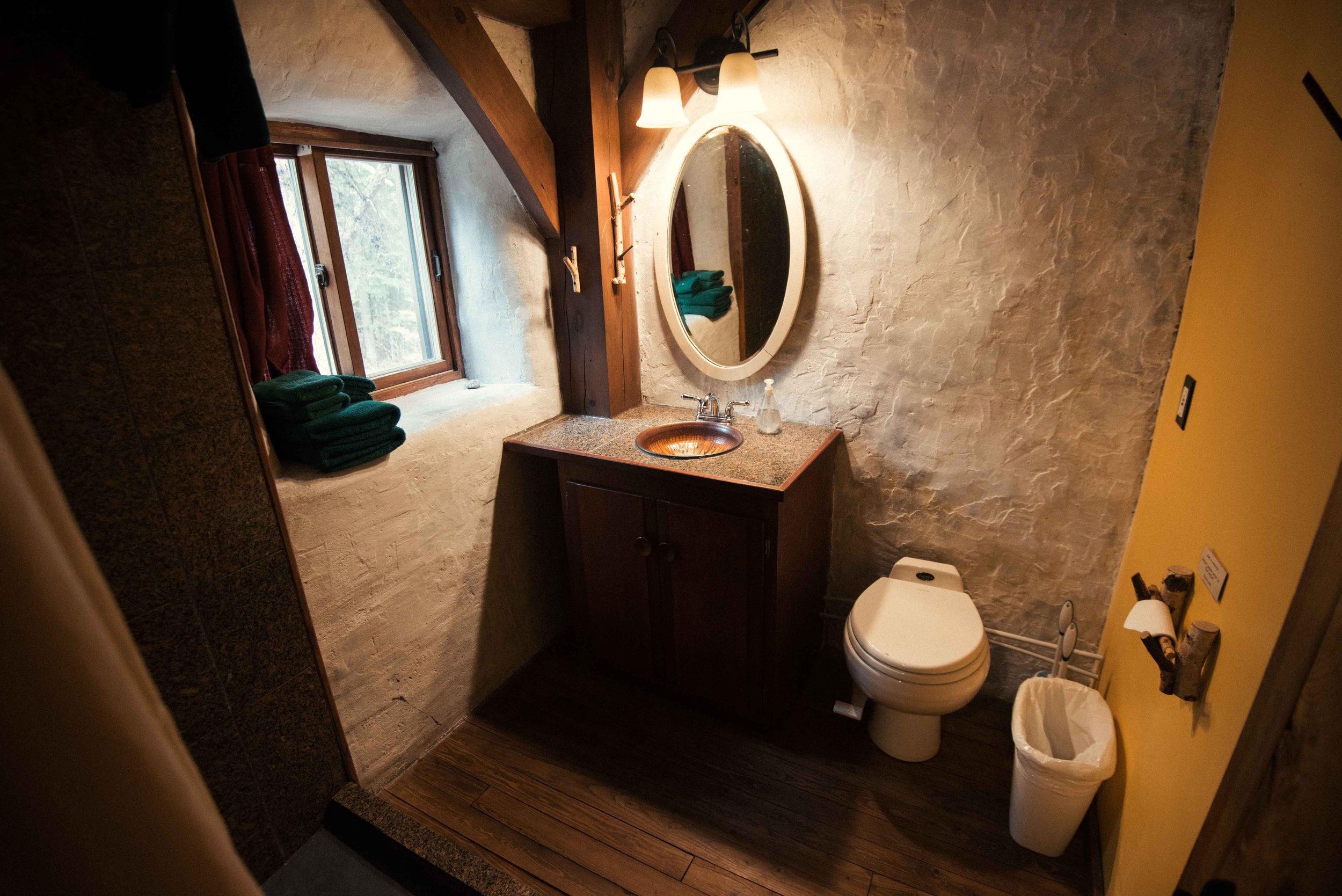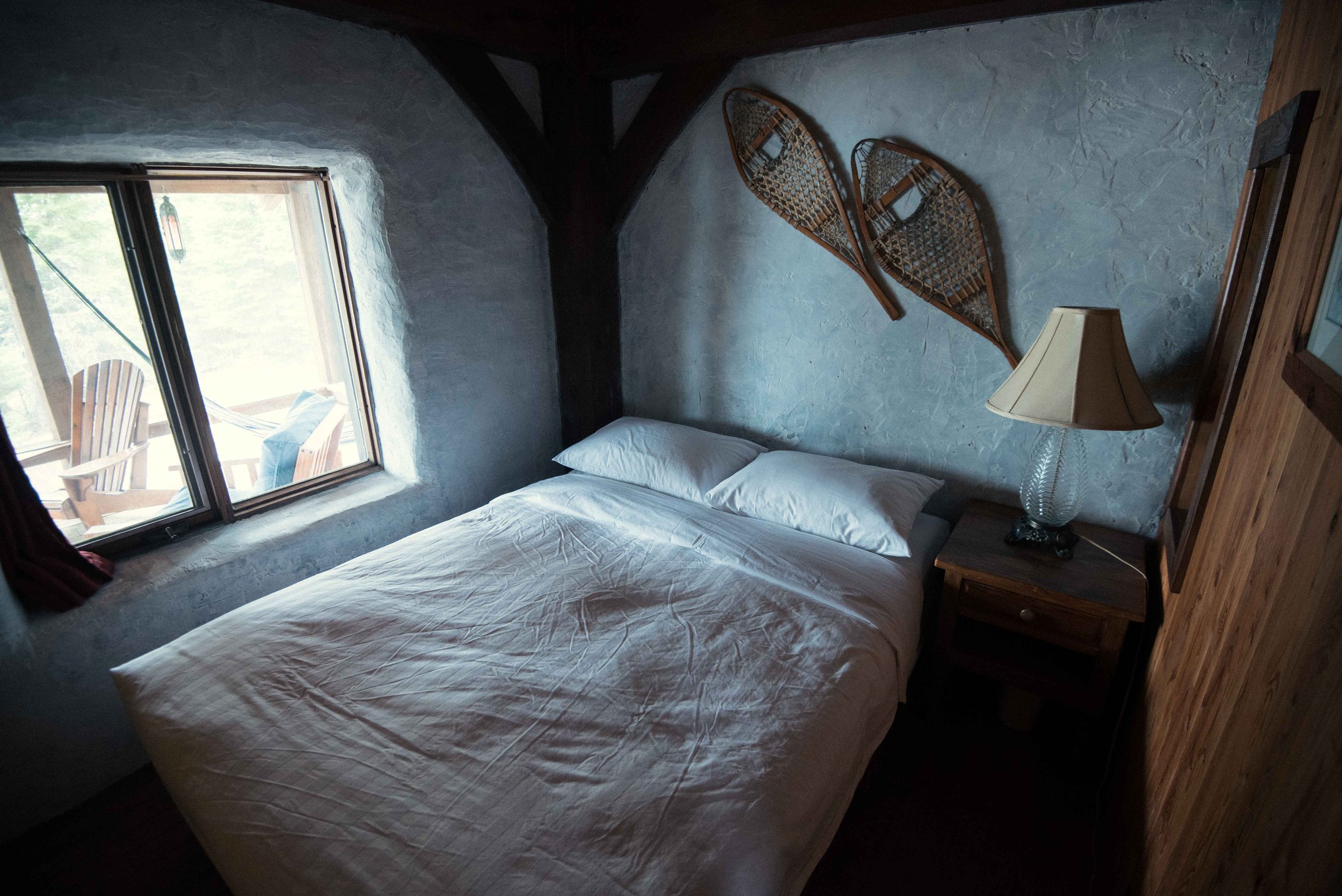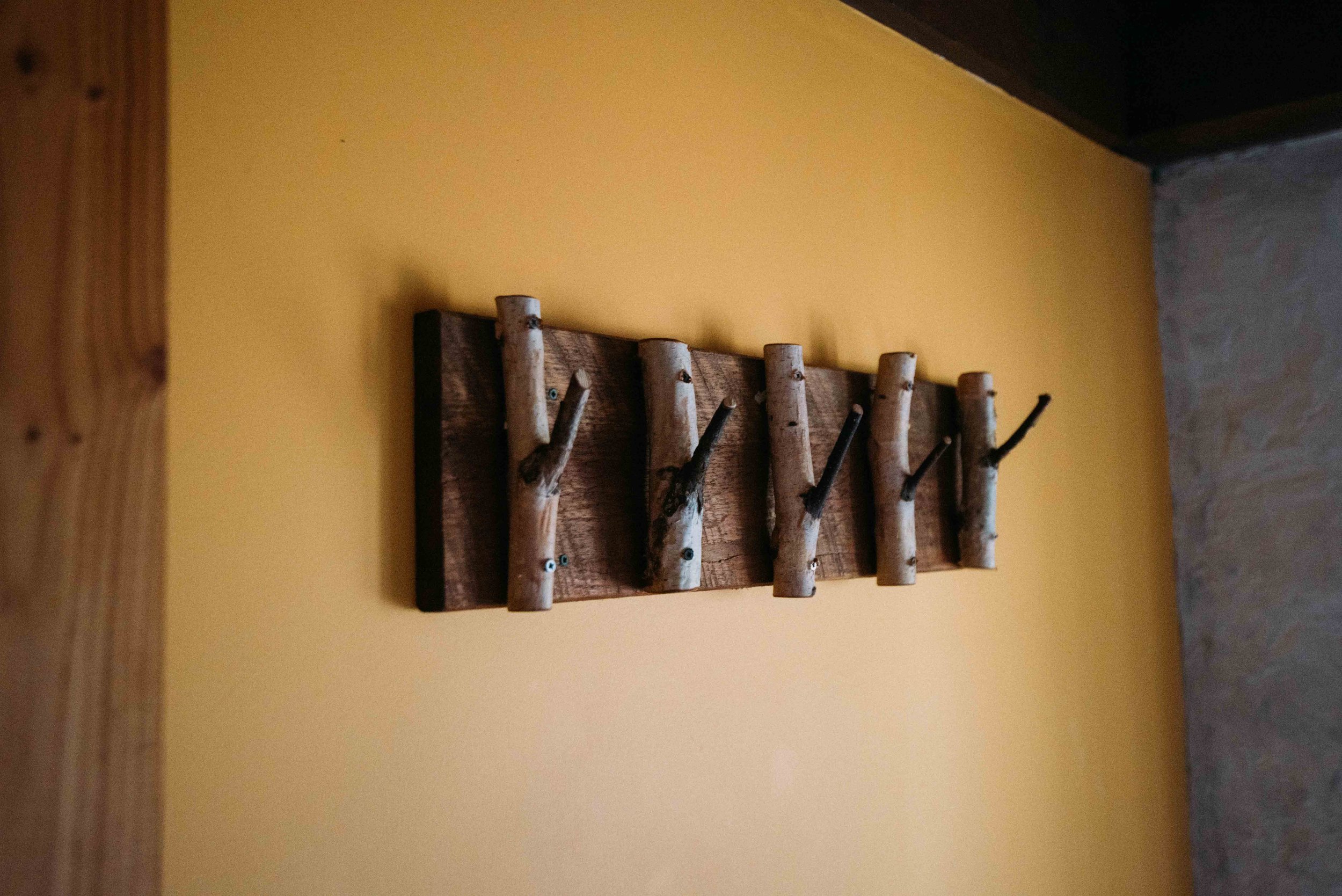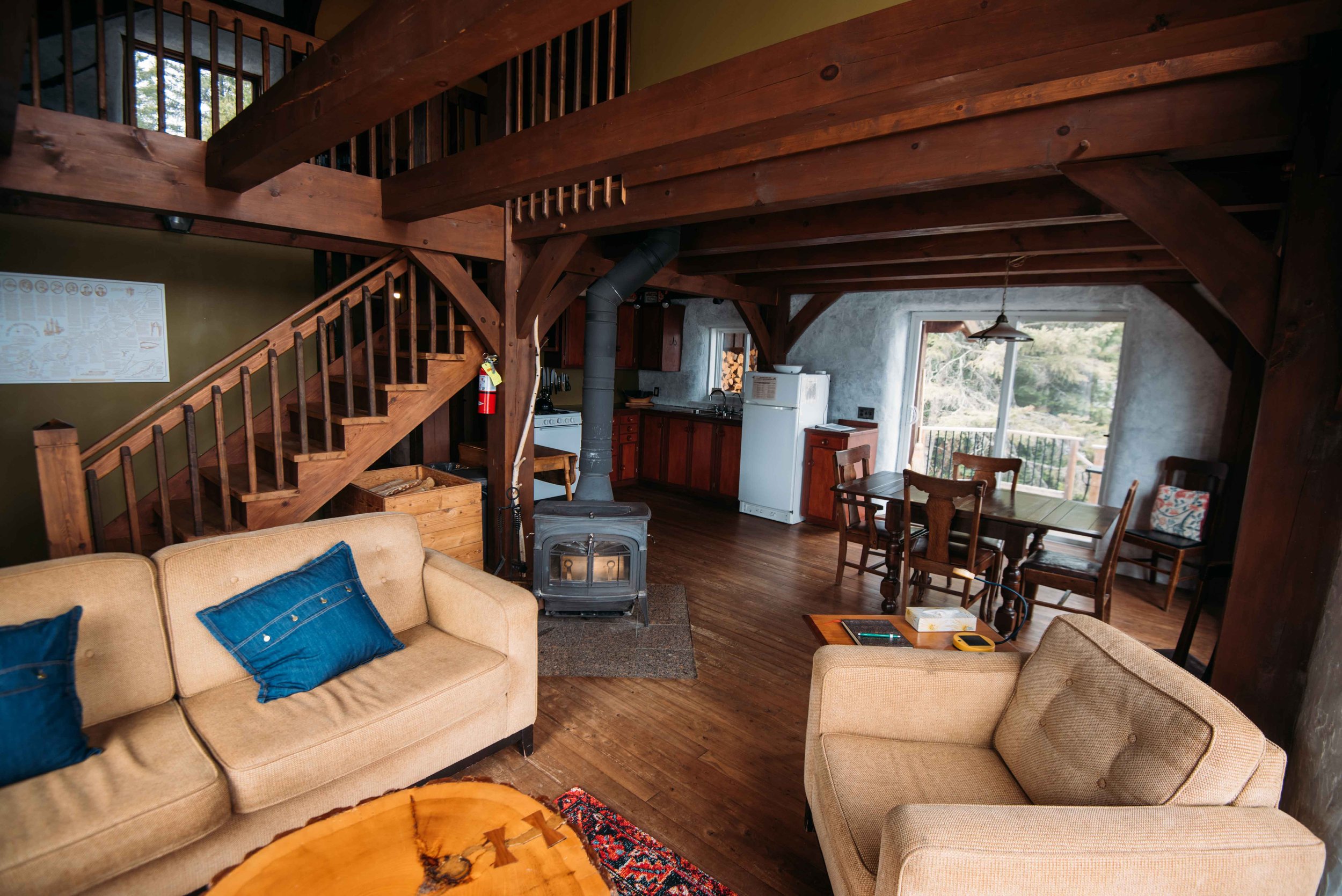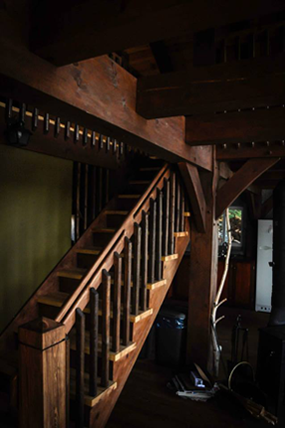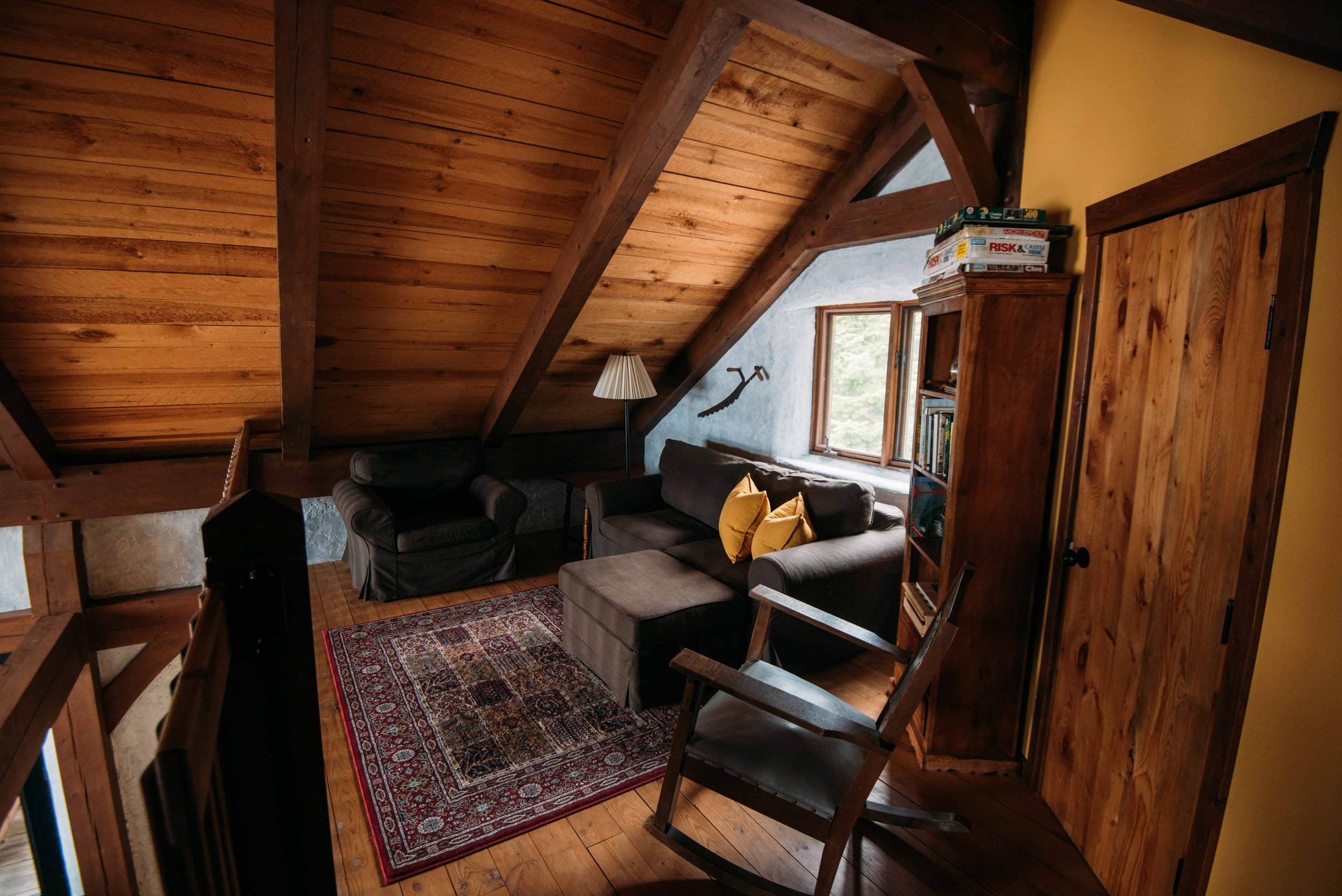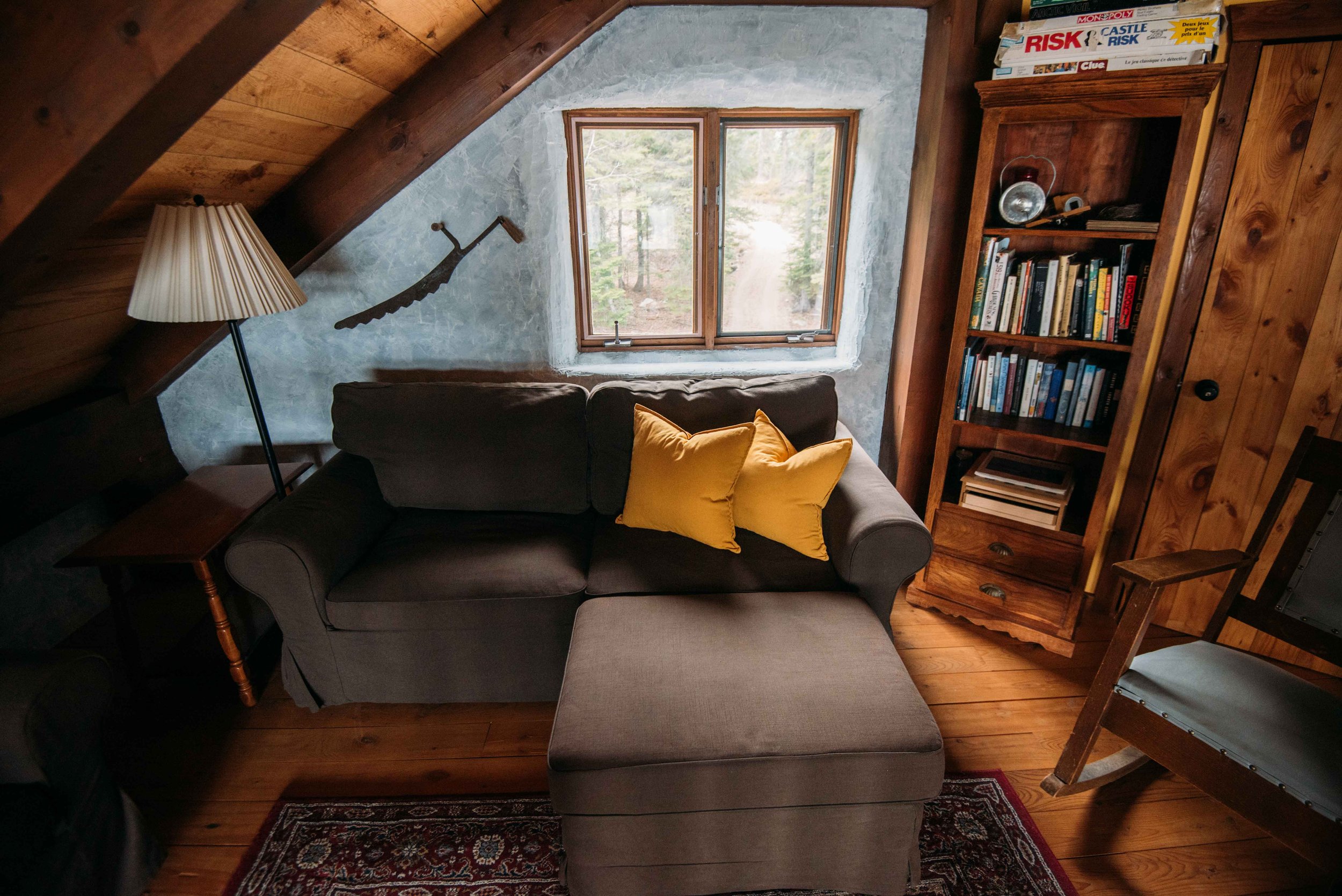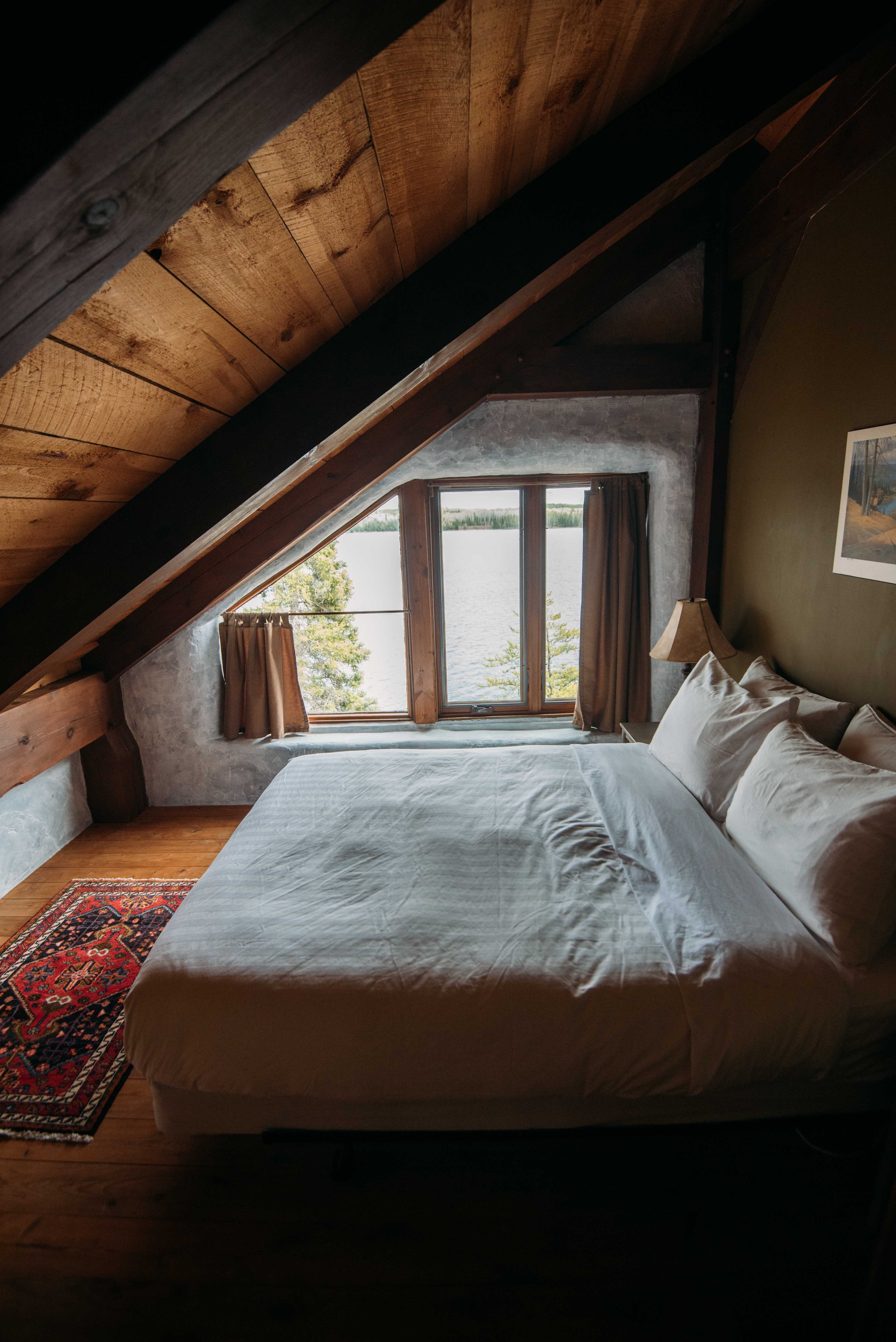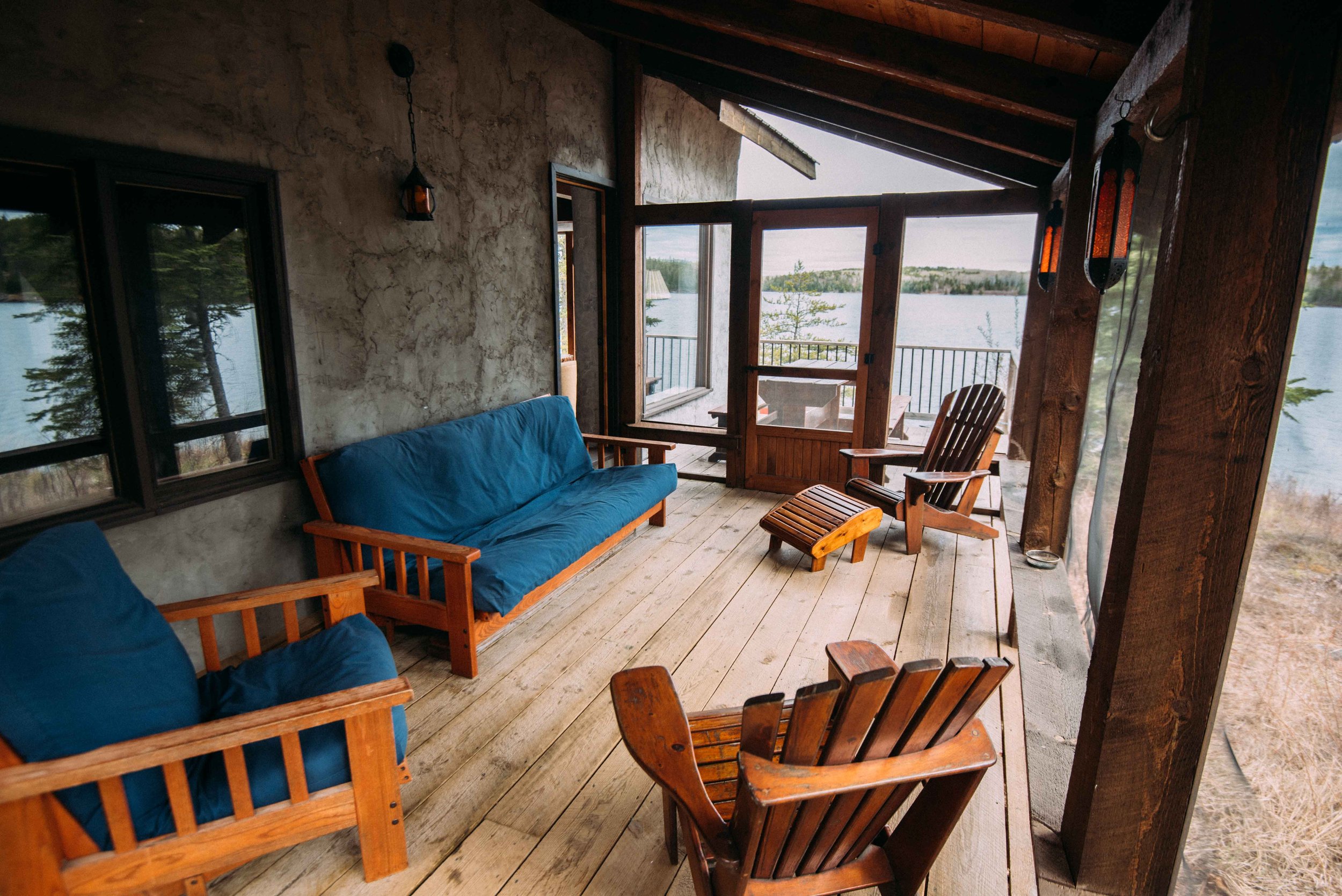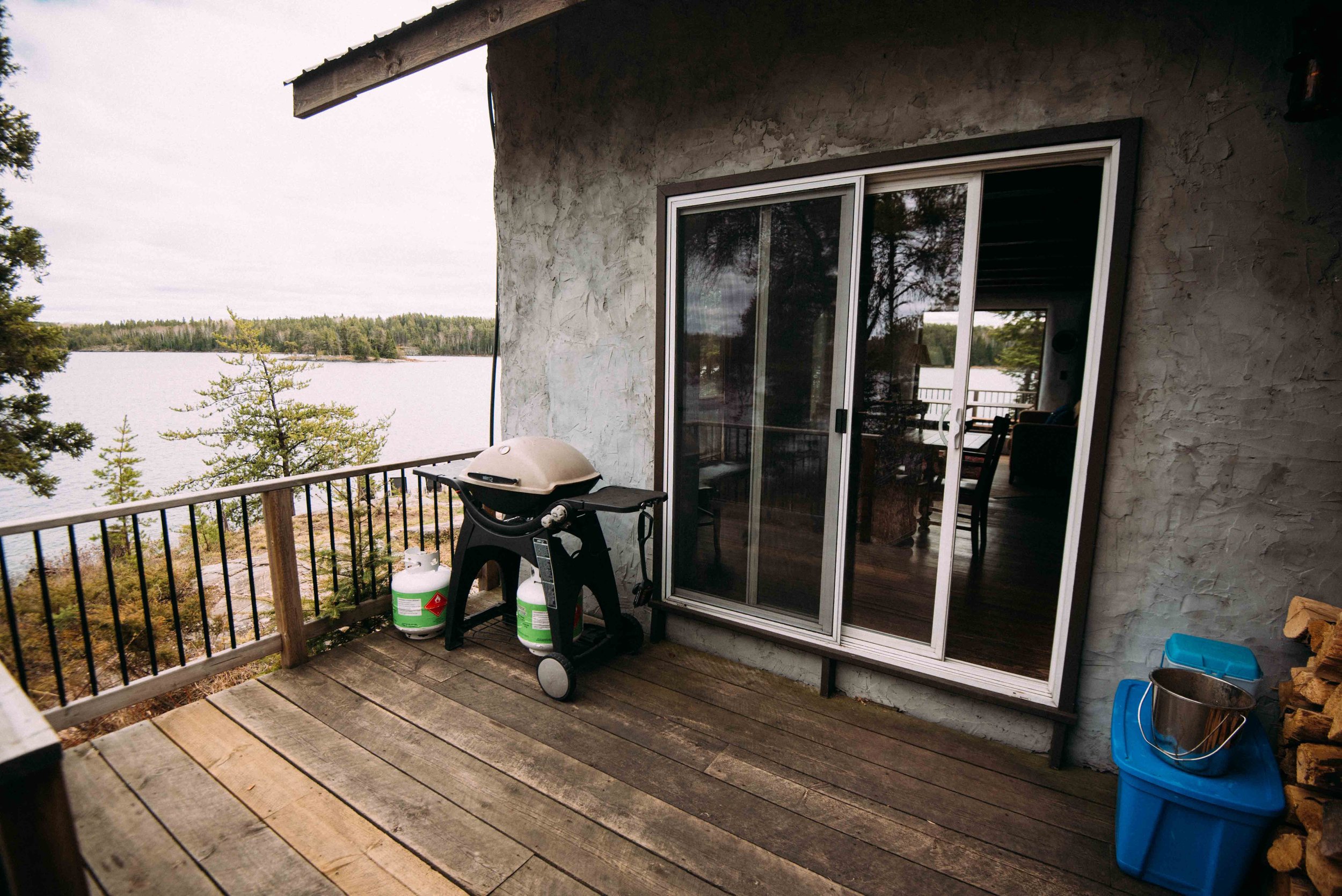Whiskey Jack High Lake Eco Cabin
Accommodates a maximum of 6 people.
Whiskey Jack is one of our hike-in High Lake Eco Cabins. Guests access the cabin via a beautiful 3 km hike and we look after transporting all your luggage for you. Whiskey Jack features straw bale construction with a timber frame interior. It features a secluded location on a ridge overlooking High Lake. There is a private swimming dock in front of the cabin with a canoe with which you can access to the shared sauna across the bay. The cabin has a fully equipped kitchen and bathroom with a shower. As an Eco cabin, Whisky Jack features solar powered electricity and a composting septic system which operates much like conventional power and water, but requires some consideration of conservation on the part of guests (turn off lights on when unused, conserve water, don't plug in anything with a heating element, etc)
Hand-built straw bale walls around a traditional timber-frame structure
Jack pine and tamarack wood floors
Reclaimed and refurbished furniture
Private swimming dock
Private canoe
Campfire pit
Indoor wood burning fireplace with complimentary firewood for indoor use
Library with board games
First floor bedroom with queen bed
Second floor bedroom with queen bed (great view of the lake)
Second floor sitting room with a pull-out couch
1 bathroom (w/ shower)
A large screened in porch with sleeping futon and two open decks
Fully stocked kitchen with fridge, freezer, stove top oven and BBQ
French press coffee maker and coffee grinder
Why build a cabin in the woods with straw bales?
Straw-bale construction, though un-conventional, is a traditional style of building that has been practiced since the late 1800's when modern baling equipment was first invented. This incredibly smart building technique is now beginning to spread the world over as people are recognizing the many benefits that come with it. Straw-bale construction uses natural, abundant, renewable materials that can be grown in a sustainable manner in the course of one season. The bales have an amazing rate of insulation with R-values as high as R-50, much higher than the conventional R-20 rating found in most homes. They provide good indoor air quality and noise reduction (many sound engineers have built recording studios out of straw-bale). They are quick to build as the bales stack up like LEGO blocks. Construction costs can be vastly reduced, as the cost of straw is usually quite low. One of the best features is that they are easy to build! Straw-bale construction allows the whole community to get involved, as stacking and stuccoing are more labour-intensive work rather than technical work that requires a lot of experience. They allow for creativity and beautiful handiwork as walls can be shaped to the builder's desire and often have a very curved organic look to them.
Are pests and rodents a threat?
No. Straw bales provide fewer spaces and havens for pests than conventional wood framing. If a good coat of plaster is applied and maintained, access for even small bugs is significantly reduced.
Are they bad for allergies?
No. Clean, bright straw has very little mold or allergy potential. Problems only arise if the straw becomes moldy with too much moisture. Straw-bale walls are also much more breathable than conventional walls that are covered in drywall.
Are they a fire hazard?
No. Despite loose straw being very flammable, trying to light a straw bale wall on fire is like trying to burn a phone book. In fact, studies conducted by biosystems engineer and professor Kris Dick from the University of Manitoba demonstrate that straw-bale walls are two times more resistant to fire than a conventional frame wall. Learn more here


